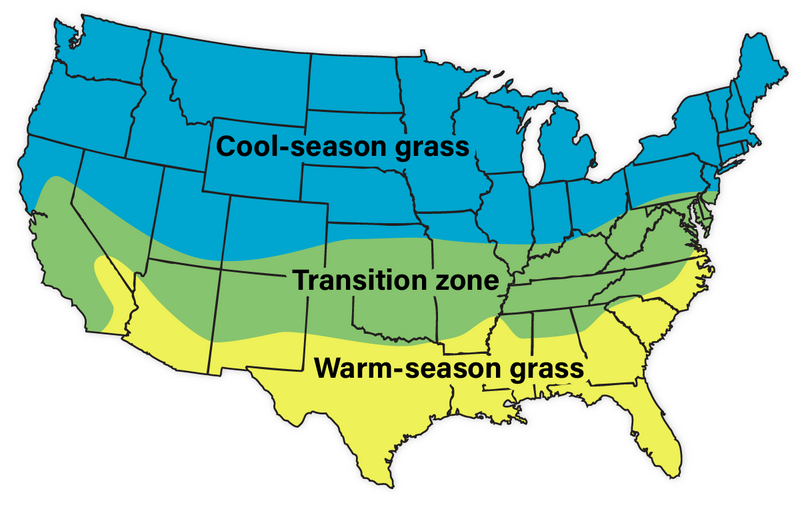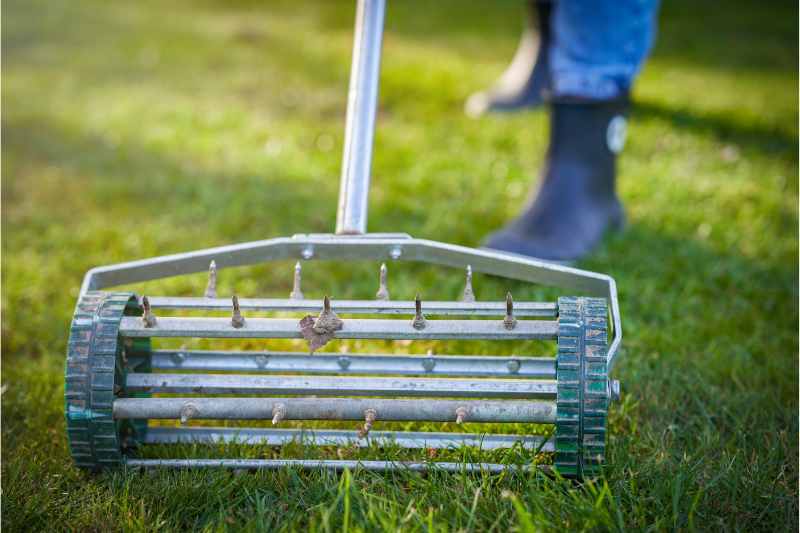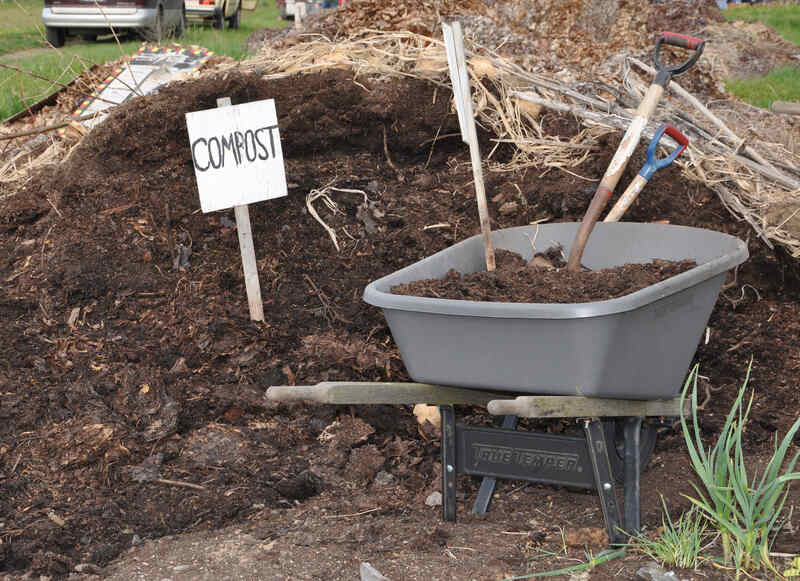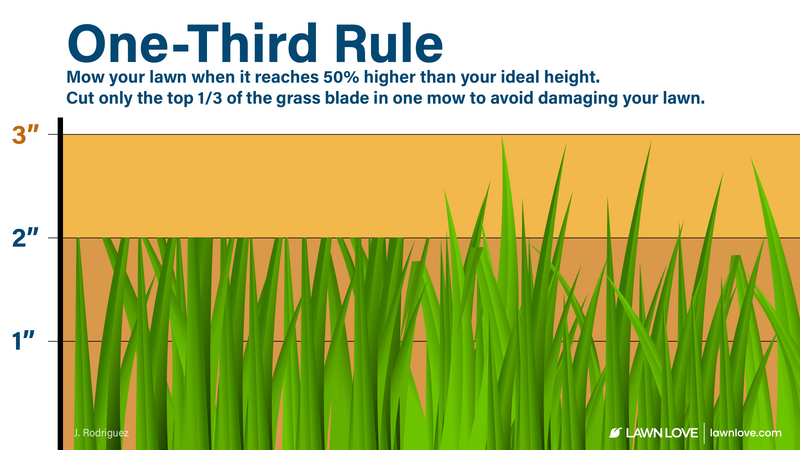
Shady lawn areas should be perfect for relaxing on hot summer days, but they are an eyesore when the grass is patchy, discolored, or dead. A lot of shade stunts root growth, weakens shoots and leaves your grass vulnerable to diseases and pests.
Luckily, there are hardy, shade-tolerant grasses ready to save your lawn from the shadows, and we have tips for growing grass in shady areas to help it thrive.
The problem with shade
Shady areas make it difficult for grass to photosynthesize and grow strong, deep roots. In shade, grass struggles to get adequate amounts of water, fertile soil, and, of course, sun. Growing grass under a tree canopy, next to a north-facing wall, or in the shadow of a building can leave your lawn bare or a sickly shade of brown.
When sunlight is scarce, grass will stretch toward the light, becoming thin and weak in the process. Additionally, when grass is shaded by trees and bushes, it is difficult for grass to get the water and nutrients it needs. Its tiny roots compete with much larger ones for photosynthetic resources.
By overseeding your lawn with shade-tolerant grass seed and maintaining your landscape with shade-friendly practices, you can conquer the dark side of your yard.
Choosing grass seed for shady areas
Where you live determines what type of grass will thrive in your yard. When choosing a shade-tolerant seed blend, it is important to understand your region and climate. They determine the best grass type and sunlight requirements for your yard.
Cool-season grasses

Cool-season grass varieties grow best in the Northern portion of the United States. They thrive in areas with warm summers and cold winters, growing rapidly in spring and fall and going dormant (turning yellow or brown) in the summer heat.
The best cool-season grasses for dense shade include:
- Fescues: There are two types of fescues, tall and fine. They produce narrow leaves and an emerald color and are popular for their rapid growth, hardiness, and drought resistance. They also have the highest shade tolerance of the cool-season grasses thanks to deeper roots.
- Fine fescue: Cultivars like creeping red, Chewings, sheep, and hard fine fescue tolerate dense shade. These are excellent choices for shaded lawns with few hours of direct sunlight. They grow best in dry and partially shaded conditions.
- Tall fescue: This type is less shade-tolerant than its fine-leaved counterpart, but it will grow well in moderately shady areas. It needs four hours of partial sunlight daily.
- Rough bluegrass: This fine-bladed, waxy, yellow-green turfgrass is best suited for moderate shade in cool, wet environments with nutrient-rich soil.
- Perennial ryegrass and Kentucky bluegrass: These grasses work well for lightly shaded areas with four to five hours of partial sun. For moderately and deeply shaded locations, opt for fescues or rough bluegrass.
Plant or overseed cool-season grasses in the early fall, between August to September. These grasses prefer cool air and warm, moist soil for germination.
Warm-season grasses

If you live in the South, choose warm-season grass. Warm-season grasses thrive in the summer heat and go dormant in the winter.
The best warm-season grasses for shady areas include:
- St. Augustinegrass: Sold as sod or plugs, St. Augustine is a coarse-textured, turfgrass with a carpet-like quality. It thrives in dense shade. However, it is prone to pests and disease.
- Zoysiagrass: Zoysiagrass is a heat- and drought-tolerant grass that retains its healthy, light-to-medium green color in shady areas. It needs at least six hours of partial sun per day.
- Centipedegrass: Low-maintenance centipedegrass is a popular creeping cultivar. It needs six hours of direct sun but will tolerate partial sun conditions.
Overseed or plant warm-season cultivars in the late spring or early summer, between April and June, once the last chance of a frost has passed.
Transition Zone grasses

The Transition Zone covers the Midwest and Mid-Atlantic regions of the U.S. Both cool- and warm-season grasses grow in these areas. However, if your lawn is shady, it’s a good idea to choose a cool-season variety. They are more shade-tolerant than warm-season grasses.
Most homeowners blend warm- and cool-season grass types to create a custom mixture suited to their unique region. Check with your neighbors and your local university’s extension office. They will give you advice about which grasses work for your climate and soil type.
Some popular grass seed blends include:
- Tall fescue and bermudagrass
- Kentucky bluegrass and Zoysiagrass
- Buffalograss and perennial ryegrass
- Fine fescue and centipedegrass
- Tall fescue and St. Augustinegrass
Plant or overseed grasses in the Transition Zone in the early spring or early fall. Check your state for its specific planting season.
How to grow shade-tolerant grass
Once you have chosen the best grass mixture for your lawn, it is time to prepare your yard for success. Even with the most shade-tolerant seeds, your lawn needs TLC for your grass seed to germinate and thrive.
Pro tip: For heavily shaded areas, consider planting groundcovers or other shade-friendly lawn alternatives.
1. Trim vegetation

No matter how shade-tolerant a plant may be, it still needs sunlight. Most shade-tolerant varieties need approximately four hours of partial sun. Before you plant your grass seed, trim your trees and thin out their canopies so sunlight can reach your seeds.
For deciduous (non-evergreen) trees, prune the bottom branches so that sunlight can slant in toward your grass. Additionally, trim your bushes and trees while keeping both feet on the ground for safety.
2. Aerate the soil

With less sunlight to evaporate moisture, shady lawns are in danger of getting waterlogged. To alleviate drainage issues and soil compaction, core aerate your lawn.
The process removes small plugs of soil, giving your grass roots a place to grow. Aeration increases oxygen and nutrient access. Experts recommend aerating your turfgrass annually in the spring or fall.
- For cool-season grasses, aerate in early fall, at least four weeks before the first frost. This minimizes weed invasion and gives your grass time to recover before the frost.
- For warm-season grasses, aerate in late spring or early summer.
3. Soil testing
Before amending your soil, test its pH and nutrient levels through your local cooperative extension office. Early fall is one of the best times to test your soil to ensure it has all the nutrients it needs to thrive.
Simply send in a core sample to receive your results detailing amendments you can make to improve your soil. Common amendments include nitrogen, phosphorus, and potassium applications and lime for soil pH imbalances.
4. Add compost

Adding compost is an easy DIY project. Simply apply a light layer of compost (approximately ½ inch deep) to give your seeds a dose of nutrients. Use a rake to gently spread the compost over the shady area. Make sure the compost layer is thin enough for you to see the grass underneath so that your new grass can establish.
5. Fertilize with caution
Stop fertilizing at least one month before seeding your lawn, so you can apply a starter fertilizer after planting. Grasses in shady areas need half as much nitrogen as their counterparts in full sun, so avoid high-nitrogen fertilizers and opt for a balanced N-P-K ratio.
Fertilizer comprises three primary nutrients: nitrogen (N), phosphorus (P), and potassium (K). Labels have three numbers, such as 5-10-5, which means the fertilizer contains 5% nitrogen, 10% phosphorus, and 5% potassium. Select a fertilizer ratio to satisfy your soil test results.
6. Overseed

It is the moment of truth, and your seeds are ready for their close-up. Use a drop spreader to disperse seed evenly across your lawn, slightly overlapping with each pass. Pay special attention to shaded and patchy areas.
As a general rule, you want seven to 10 seeds per square inch of lawn. Rake lightly to ensure the seeds have contact with the soil. To maintain your lawn long-term, overseed once per year.
7. Water
For your first watering, thoroughly mist the shaded area. Keep the soil moist. Start with short watering sessions, typically 10 to 15 minutes, two to three times per day to prevent surface drying. Additionally, the types of shade in your landscape affect your lawn’s watering needs.
- If shade is caused by a building or wall, your shady area will need less water than a comparable sunny area, because shade decreases the evaporation rate.
- If shade is caused by taller vegetation, grass in the shaded area will need more water because it is competing with bush and tree roots for moisture.
- Once grass seeds have germinated, switch your watering routine to deeper, less frequent waterings to encourage roots to bury far into the soil. Water three times per week for 20 minutes.
8. Mow

When your grass is 3 to 4 inches tall, you can mow it for the first time. Stick to the one-third rule: Don’t cut your grass shorter than one-third of its height.
Keep grass in shady spots half an inch to an inch taller than grass in sunny areas. This additional length gives the grass a larger area for photosynthesis, which helps make up for the scarcity of sunlight. Check out the optimal mowing heights for different grass types and zones:
- Cool-season grasses: The optimal height is between 2.5 to 3.5 inches. However, in shady areas, you can lean towards the upper end of this range to help your grass capture more sunlight and compete with tree or building shading.
- Warm-season grasses: Mow between 1 to 2.5 inches. In shady areas, you may want to maintain a slightly higher mowing height within this range (closer to 2.5 inches) to promote better photosynthesis and reduce stress on the grass.
- Transition Zone: This zone benefits from grass heights between 2.5 to 3.5 inches, like cool-season cultivars. However, aim for a mowing height around 3.5 inches to provide adequate shade tolerance.
Pro tip: Keep your mower on its highest setting and change your mowing direction from one mowing to the next. This will prevent lawn damage and soil compaction.
9. Maintain
Now that your shade-loving blades are chilling in the shadows, you just need to keep them calm, cool, and collected. Avoid frequent herbicide use, as it can stress your grass. If weeds are an issue, apply one broadleaf application in the fall. Otherwise, spot-treat weeds.
To correct thin patches and ensure your lawn grass stays even, overseed annually in late August or early September. Additionally, consider stepping stones, brick, mulch, or gravel to keep foot traffic to a minimum and prevent stress on your grass.
FAQ about growing grass in shady areas
How do I grow grass in mossy areas?
If you’d rather not have a moss garden, start off by pruning your trees to increase available sunlight. Amend your soil to neutralize the acidity and increase nutrient levels. Moss loves compacted, acidic, nutrient-poor soil.
For lasting results, dethatch and aerate your lawn to rake up the moss and loosen your soil, allowing more oxygen, water, and nutrients to penetrate down to your grass roots. Aeration makes the lawn more hospitable to grass seedlings. You also can install sod after aeration for an easy, healthy lawn fix.
For a quicker (but more temporary) solution, you can grow grass over your moss by covering moss with compost or potting soil and planting grass seed over the soil. You can do this every spring and fall, watering your grass seeds thoroughly after planting. However, if the moss keeps coming back, you need to dethatch and aerate.
Are there shade-specific fertilizers or soil amendments I should use?
Some fertilizers formulated for shade conditions may contain nutrients that promote grass growth in lower light. Soil testing can help determine specific nutrient needs.
What are some common issues in shady lawns?
Common issues in shady lawns include thinning grass, moss and algae growth, and increased susceptibility to fungal diseases due to reduced air circulation and prolonged moisture.
Getting started in the shade
Taking in the shade with a glass of cold lemonade can be the perfect afternoon, but sweating it out in your yard isn’t always appealing. Let Lawn Love connect you with a local lawn care professional to take the preparation and planting off your hands so you can relax and enjoy a verdant, shady lawn.
Main Image Credit: Unsplash